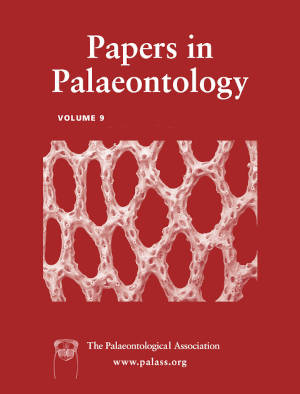Article: Early detritivory and sedimentivory in insects based on in situ gut contents from Triassic aquatic nymphs
Publication: Papers in Palaeontology
Volume:
9
Part:
1
Publication Date:
2023
Article number:
e1478
Author(s):
Enrique Peñalver, Rafel Matamales-Andreu, Josep Juárez-Ruiz, André Nel, Rafael Pablo Lozano, and Ricardo Pérez-de la Fuente
DOI:
10.1002/spp2.1478
Abstract
Abstract The colonization of freshwater by insects is one of the milestones in the establishment of continental ecosystems and, thus, of life on our planet. However, several key aspects of this process such as patterns of origination, early adaptations and palaeoecological relationships of the groups involved remain poorly known, namely due to the scarcity of significant assemblages. The Palaeozoic fossil record of freshwater insects is poor and unstudied in suitable detail. Here we analyse exceptionally preserved, three-dimensional cololites (in situ gut contents) in abundant mayfly nymphs from Pedra Alta (lower Anisian, lowermost Middle Triassic; Mallorca, Spain), which probably inhabited lentic waters (pools) in a riverine ecosystem. This Konservat-Lagerstätte shows an aquatic insect assemblage c. 2 myr older than the similar locality of Grès à Voltzia (Northern Vosges, France). Detailed morphological and elemental analysis show that the cololites are composed of the same very fine-grained claystone as the fossil-bearing rock. This study presents the oldest direct evidence of insect detritivory, as well as most probably that of sedimentivory. The trophic niche represented by insect sedimentivory in the early continental aquatic ecosystem of Pedra Alta is not known for the subsequent c. 240 myr of insect evolutionary history and up to the present. This lifestyle in extant insects is extremely infrequent and is known only in a few species of burrowing mayfly nymphs. Our findings illuminate the role of insects in detritus processing in relatively complex food webs shortly after the end-Permian mass extinction event.
